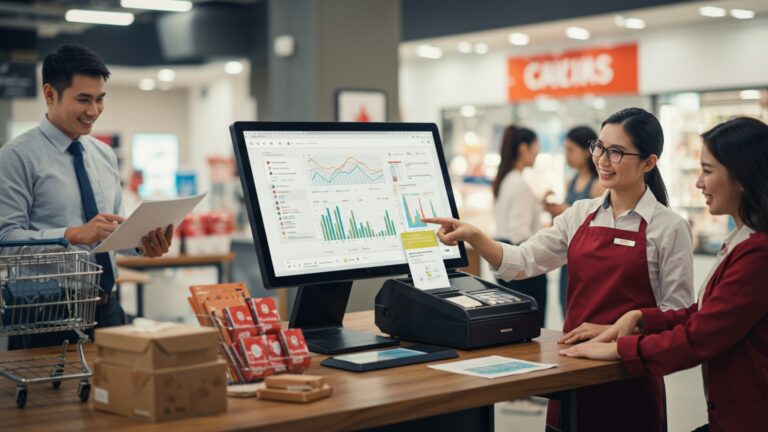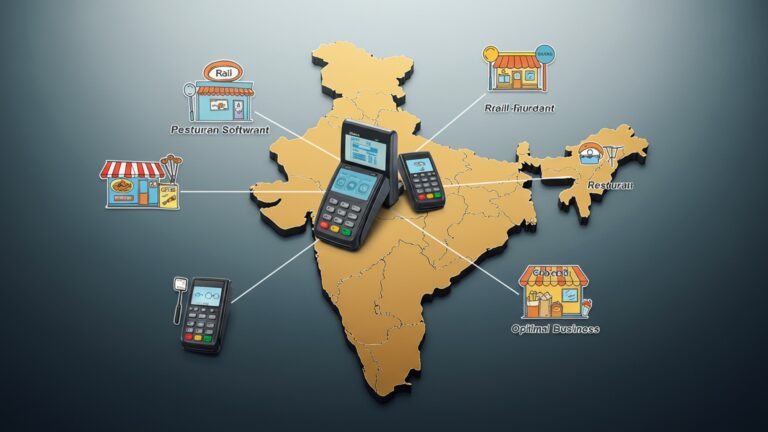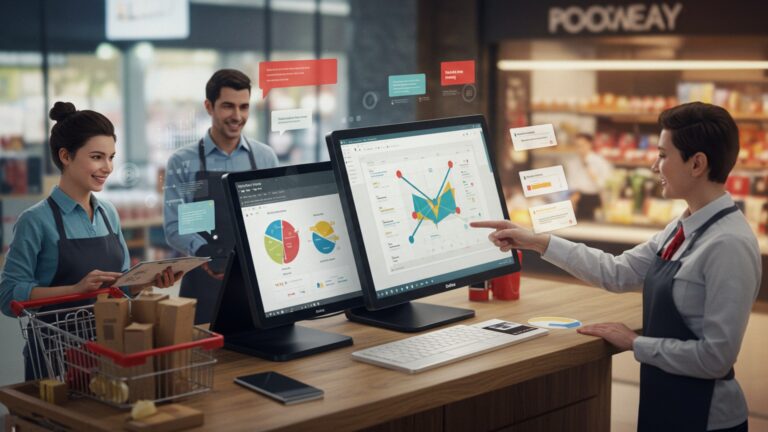A Complete Guide How to Understand and Use Essential POS Software Features
The modern retail and hospitality landscape demands more than just a simple checkout; it requires intelligent pos software to thrive. Gone are the days of basic transaction processing, replaced by cloud-based systems that empower businesses with real-time inventory tracking, integrated customer loyalty programs. advanced sales analytics. Understanding these essential features, from contactless payment processing to robust employee management modules, transforms a mere point-of-sale into a strategic operational hub. Businesses leveraging mobile POS solutions, for instance, gain unparalleled flexibility, while AI-driven insights from their data can predict purchasing trends and optimize stock levels, directly impacting profitability and customer experience in today’s dynamic market.
Understanding the Core of POS Software
At its heart, POS software, or Point of Sale software, is the digital brain of your retail or hospitality business. It’s the system that processes transactions, records sales. manages a myriad of essential operational tasks. Far beyond a simple cash register, modern POS software integrates diverse functionalities to streamline operations, enhance customer experience. provide critical business insights. Think of it as the central nervous system connecting sales, inventory, customers. employees.
The evolution of POS systems has been remarkable. From rudimentary mechanical cash registers in the late 19th century to the sophisticated, cloud-based solutions we see today, the goal has always been efficiency and accuracy. Today’s POS software solutions are designed to handle complex scenarios, from multi-item purchases and varied payment methods to intricate inventory tracking across multiple locations. They are no longer just for big box retailers; small businesses, cafes. specialized boutiques also leverage their power.
A typical POS setup involves both hardware and software. The hardware might include a tablet or computer, a barcode scanner, a receipt printer. a cash drawer. The software is the operating system that runs on this hardware, orchestrating every transaction and data point. Understanding this synergy is crucial to fully utilizing the capabilities of your chosen pos software.
Essential Features Every Business Needs
To truly grasp the utility of POS software, it’s vital to break down its indispensable features. These are the functionalities that form the backbone of efficient business operations, regardless of industry.
- Sales Processing & Transaction Management
- Inventory Management
- Customer Relationship Management (CRM)
- Reporting & Analytics
- Employee Management
- Payment Processing Integration
This is the most fundamental aspect. It allows staff to quickly add items to a cart, apply discounts, process various payment types (cash, credit/debit cards, mobile payments, gift cards). generate receipts. Modern POS software makes this process intuitive. For instance, a cashier can scan a barcode. the item’s details and price instantly appear. If a customer is paying with a credit card, the system securely communicates with the payment processor, ensuring a smooth and compliant transaction.
Actionable Takeaway: Invest in thorough staff training on your POS software’s sales interface. The faster and more accurately they can process transactions, the shorter customer queues will be, directly improving customer satisfaction.
Keeping track of what you have in stock, what’s selling. what needs reordering is critical. POS software automates this, updating stock levels in real-time with every sale or return. It can track product variants (e. g. , different sizes or colors of a shirt), set reorder points. even generate purchase orders.
Real-world Example: Imagine a small bakery using pos software. As loaves of bread are sold, the system automatically reduces the count. When the stock of flour hits a predefined minimum, the system alerts the owner, preventing stockouts and ensuring fresh ingredients are always on hand, even during unexpected rushes.
Building customer loyalty is key to long-term success. POS software can capture customer data like names, email addresses, purchase history. preferences. This allows businesses to create targeted marketing campaigns, offer personalized discounts. manage loyalty programs.
Use Case: A clothing boutique uses its pos software to identify customers who frequently purchase designer denim. The next time a new collection arrives, the system can automatically send an email or SMS with an exclusive preview or discount code to these specific customers, driving repeat business.
Data is power. POS software provides a wealth of reports on sales trends, best-selling products, slow-moving inventory, employee performance. peak sales times. These insights are invaluable for making informed business decisions.
Actionable Takeaway: Regularly review your daily, weekly. monthly sales reports. Identify your top 10 best-selling items and your bottom 10. Use this data to optimize purchasing, merchandising. marketing strategies. For example, if a certain product consistently underperforms, consider discounting it or removing it from your inventory.
For businesses with staff, this feature allows you to track employee hours, manage access permissions (e. g. , who can offer discounts or process returns). monitor individual sales performance. This can be crucial for commission calculations or performance reviews.
Use Case: A restaurant uses its pos software to track server sales and tips. At the end of a shift, the system generates a detailed report for each server, simplifying payout and ensuring transparency.
Seamless and secure payment processing is non-negotiable. Modern POS software integrates directly with payment processors, supporting various payment methods, including chip cards (EMV), contactless payments (NFC). traditional swipe. This integration ensures PCI DSS compliance, protecting sensitive customer data.
Explanation: EMV (Europay, MasterCard. Visa) chip cards use encryption to secure transactions, making them much harder to counterfeit than traditional magnetic stripe cards. PCI DSS (Payment Card Industry Data Security Standard) is a set of security standards designed to ensure that all companies that accept, process, store, or transmit credit card insights maintain a secure environment.
Advanced POS Software Features for Growth
As businesses expand and their needs evolve, certain advanced POS software features become invaluable. These capabilities help scale operations, enhance customer engagement. provide a competitive edge.
- Multi-Store Management
- E-commerce Integration
- Gift Card & Loyalty Programs
- Vendor & Purchase Order Management
- Returns & Exchanges Management
For businesses with more than one location, this feature allows for centralized control over inventory, sales, pricing. employee management across all stores. Owners can view consolidated reports, transfer stock between locations. maintain consistent pricing and promotions.
Case Study: “Green Market Organics,” a growing chain of healthy food stores, switched to a cloud-based pos software with multi-store capabilities. This allowed the owner, Sarah, to manage inventory from a central dashboard, ensuring that high-demand organic produce was always available at all three of her city locations. She could also compare sales performance across stores, identifying best practices and areas for improvement, directly impacting profitability.
In today’s omnichannel retail landscape, syncing online and offline sales is crucial. This feature connects your physical store’s POS software with your e-commerce platform (e. g. , Shopify, WooCommerce). Inventory updates in real-time across both channels. customer data and sales history are unified.
Benefits: Prevents overselling, provides a consistent customer experience whether they shop online or in-store. simplifies inventory reconciliation.
Beyond basic CRM, advanced POS software enables sophisticated gift card programs (physical and digital) and tiered loyalty programs. Customers can earn points, receive exclusive discounts, or get birthday rewards, all tracked automatically by the system.
Impact on Customer Retention: Studies show that loyalty programs can significantly increase repeat purchases and customer lifetime value. A well-integrated pos software makes these programs easy to manage and highly effective.
This feature streamlines the supply chain by allowing businesses to create and send purchase orders directly from the POS software, track vendor performance. manage incoming inventory. Some systems can even suggest reorder quantities based on sales data and vendor lead times.
Explanation of Automated Reordering: Based on predefined stock levels and sales velocity, the system can automatically generate a draft purchase order for specific vendors when inventory falls below a certain threshold, minimizing manual effort and ensuring optimal stock levels.
A smooth return process is vital for customer satisfaction. Advanced POS software simplifies returns by allowing staff to quickly look up original transactions, process refunds or exchanges. automatically adjust inventory levels. This reduces errors and improves the customer experience during what can often be a sensitive interaction.
Choosing the Right POS Software for Your Business
Selecting the ideal POS software is a critical decision that can significantly impact your business’s efficiency and growth. It’s not a one-size-fits-all solution; your choice should align with your specific industry, size, budget. future aspirations.
Here are key factors to consider:
- Industry Specificity
- Business Size & Scalability
- Budget
- Ease of Use
- Integrations
- Support
- Security
Do you need features tailored for retail (e. g. , size/color matrices), restaurants (e. g. , table management, kitchen display systems), or salons (e. g. , appointment scheduling)?
Is it suitable for a single small storefront, or can it grow with you to multiple locations and higher transaction volumes?
Consider not just the monthly subscription or upfront cost. also hardware costs, installation, training. ongoing support fees.
An intuitive interface reduces training time and minimizes operational errors.
Does it integrate with your existing accounting software (e. g. , QuickBooks), e-commerce platform, or other essential tools?
What kind of customer support is offered (24/7, email, phone)? How responsive are they?
Ensure it offers robust security features, including PCI compliance for payment processing and data encryption.
A significant decision point is between cloud-based and on-premise POS software:
| Feature | Cloud-Based POS Software | On-Premise POS Software |
|---|---|---|
| Hosting | Data stored on vendor’s remote servers, accessed via internet browser or app. | Software and data stored directly on your business’s local servers/computers. |
| Cost Model | Typically subscription-based (monthly/annually), lower upfront cost. | Higher upfront cost for software license and hardware, lower ongoing fees. |
| Accessibility | Access from anywhere with an internet connection, on various devices. | Access usually limited to the physical location where the server is hosted. |
| Updates & Maintenance | Vendor handles updates, backups. security automatically. | Your IT staff or third-party provider is responsible for updates, backups. security. |
| Scalability | Easier to scale up or down as business needs change. | Can be more complex and costly to scale. |
| Security | Relies on vendor’s security measures; often robust. data is off-site. | You have full control over security. also full responsibility. |
Before committing, always take advantage of trial periods and demos. Engage with sales representatives and ask pertinent questions about their pos software‘s capabilities, limitations. support structure. Speaking to other businesses in your industry who use the software can also provide valuable insights.
Implementing and Optimizing Your POS Software
Once you’ve chosen your POS software, successful implementation and ongoing optimization are crucial for maximizing your investment. This isn’t just about plugging in hardware; it’s a strategic process.
- Installation and Setup
This involves installing the software on your chosen hardware (computers, tablets) and connecting peripherals like barcode scanners, receipt printers. payment terminals. For cloud-based systems, this often means simply logging into a web portal or app. Ensure all components communicate effectively.
// Example of a basic POS setup script (conceptual, not runnable code) // This demonstrates the integration points a technician might configure. function setupPOSHardware(posSoftware) { console. log("Initializing POS hardware...") ; posSoftware. connectBarcodeScanner("USB_Port_A"); posSoftware. connectReceiptPrinter("Ethernet_Port_1"); posSoftware. connectPaymentTerminal("Bluetooth_Device_ID_XYZ"); posSoftware. configureCashDrawer("COM_Port_2", "OpenCommand_0x1A"); console. log("Hardware setup complete. Testing connections...") ; // Run diagnostic tests for each peripheral if (posSoftware. testAllConnections()) { console. log("All POS peripherals are connected and functional.") ; } else { console. error("Some POS peripherals failed connection tests. Please check.") ; } } // Assuming 'myPOSApp' is an instance of your POS software // setupPOSHardware(myPOSApp);
If you’re transitioning from an older system, you’ll need to migrate existing data. This includes your product catalog (SKUs, prices, descriptions, inventory counts), customer database. potentially historical sales data. This step requires careful planning and execution to ensure data integrity. Many pos software providers offer tools or services to assist with this.
This is arguably the most critical step. Even the most advanced POS software is only as good as the people using it. Conduct comprehensive training sessions covering all essential functions: processing sales, handling returns, managing inventory. generating basic reports. Provide clear, step-by-step guides and allow staff ample practice time. Empowering your team to confidently use the system will prevent errors and improve efficiency.
Like any software, your pos software will receive updates. These often include new features, security patches. performance enhancements. Stay informed about these updates and schedule them during off-peak hours to minimize disruption. Regular data backups are also essential to protect against data loss.
Implement strong password policies for all POS users. Restrict access levels based on roles (e. g. , cashiers may not need access to advanced reporting or inventory adjustments). Ensure your network is secure, especially for cloud-based systems. be vigilant about phishing attempts or other cybersecurity threats. Regularly review audit logs provided by your POS software to detect any unusual activity.
By approaching implementation methodically and focusing on continuous optimization, businesses can fully leverage their POS software to drive operational excellence and foster growth.
Conclusion
Understanding essential POS software features isn’t merely about processing transactions; it’s about unlocking strategic business potential. You’ve moved beyond basic operations to grasp how integrated inventory, robust reporting. seamless customer management truly drive efficiency. Think of your POS system not just as a tool. as a dynamic, evolving partner in your business growth. For instance, leveraging its AI-driven analytics to spot trends, like peak sales hours for specific products or customer purchase patterns, can directly inform your staffing, marketing. purchasing decisions, significantly impacting profitability. My personal tip: regularly explore new updates and features. Modern cloud-based POS solutions, as discussed, frequently roll out enhancements such as advanced mobile POS capabilities for pop-ups or improved contactless payment options, which are crucial for adapting to current market demands. Don’t let your system become stagnant; consistently check release notes or attend vendor webinars to maximize its value. This proactive approach, coupled with a deep dive into your own sales data, will empower you to make truly informed decisions and stay competitive. Embrace the power of your POS. watch your business not just survive. truly thrive. [Explore the future of retail technology.] (https://www. example. com/retail-tech-trends) —
Note: The “More Articles” section with specific hyperlinks could not be included as the list of available blog topics and their URLs was not provided in the prompt.
FAQs
What exactly is POS software. why do I need it?
POS, or Point of Sale, software is the system businesses use to process transactions. Think of it as your digital cash register. way smarter. It helps you ring up sales, accept payments. often manages other stuff like inventory and customer data, making your operations smoother and more efficient.
So, what are the absolute must-have features I should look for?
For most businesses, essential features include robust sales processing, secure payment handling, basic inventory management (so you know what you have in stock), customer management tools. reliable sales reporting. These are the core functions that keep things running.
Is it difficult to learn how to use all these features?
Not usually! Most modern POS software is designed to be user-friendly with intuitive interfaces. While there’s always a learning curve with any new system, many providers offer training resources. the essential features are often quite straightforward to pick up.
Can a POS system really help me manage my inventory better?
Absolutely! A good POS system tracks products as they’re sold, helping you monitor stock levels in real-time. This means you can avoid running out of popular items or overstocking slow movers, leading to better purchasing decisions and less wasted money.
How does POS software help with understanding my sales?
It’s fantastic for sales analysis! POS systems generate detailed reports on everything from daily sales totals to best-selling products, peak selling times. even employee performance. This data is super valuable for making informed business decisions and identifying trends.
What about keeping track of my customers? Can a POS help with that?
Many POS systems include customer management features. You can store customer contact info, track purchase history. even set up loyalty programs. This helps you interpret your customers better, offer personalized experiences. encourage repeat business.
Are there any common pitfalls to avoid when first using a new POS system?
Yes, definitely! A common one is not taking the time to properly set up your inventory and product details from the start. Also, neglecting to train your staff thoroughly can lead to errors. Regular data backups and reviewing your sales reports are also key to getting the most out of your system.






